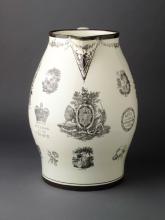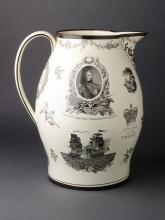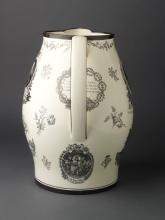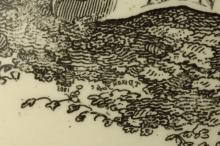Overglaze
Printing on Earthenware and Stoneware 1800-1900
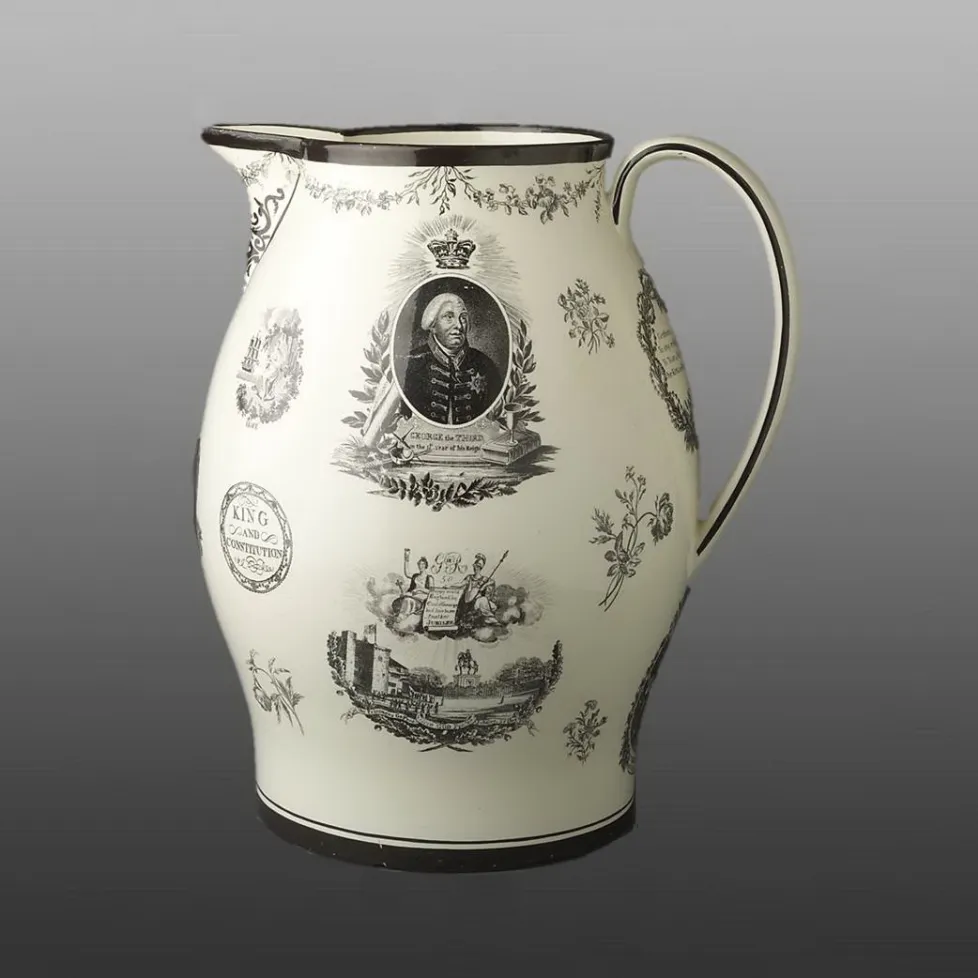
S.Robert Teitelman Collection at Winterthur
Additional Image:
Front of the jug showing the print of the Royal Coat of Arms. The engraving is signed within the etched foliage beneath the motto ribbon slightly to the left of center. The inscription is in reverse and reads "T. Dixon Scupt 1803", Thomas Dixon was an engraver known to have been working in Liverpool from 1806 to 1816 perhaps this is the first documentary evidence of his working there somewhat earlier.
The reverse of the jug has prints including an oval portrait of inscribed "The RT. HBLE. LORD VISCT. WELLINGTON. K.B. &c. &c." supported by naval trophies. Arthur Wellesley was ennobled as Viscount Wellington in 1809 for his successful command of the British Forces in Portugal during the early years of the Peninsular War in which Britain united with Portugal and with Spanish guerrilla forces to defeat the French first in Portugal and then in Spain . This portrait shows Wellington as a young British hero wearing the star of the grand cross of the order of the Bath to which he was admitted in 1803. He continued to rise in the peerage to become the 1st Marquis of Wellington in 1812 and 1st Duke of Wellington in 1814.
Additional Source Image:
On the handle side of the jug is a a wreath conating a patriotic toast to King and Country, and beneath the handle is a small print entitled "O THE ROAST BEEF OF OLD ENGLAND", perhaps referring to the popular patriotic song of that time.Shape Type
Miscellaneous
Pattern Type
Commemorative, Heraldic and Historical Events
Date
1803
Dimensions
- Height: 42.30 in (107.44 cm)
Maker
Herculaneum
Engraver's Name
T. Dixon
Engraver's Mark:
Description:
BACK TO CATALOG INDEX

